Landscape photography tips: The quick and the good
As I started preparing this article on landscape photography tips – the first in an upcoming series – I wondered about what is already there on the 'Net. So I asked the most popular search engine – yes, the one with a G – for exactly this, "landscape photography tips".
I got, like, over 7.5 million results.
Wow, I thought, it seems to be a lot of people out there knowing quite a thing about landscape photography and giving tips. I clicked the link which came up on top of the pile. Its title was "10 quick landscape photography tips".
You may want to rotate your phone in order to improve your browsing experience on this site.
Quick ain't good
Before we start discussing what I found beyond the link, here's a quick – erm, pun intended – peek at the definition of "quick". According to my favourite online dictionary, it can only mean in this context
- "done with promptness or rapidity"
- "that is over or completed within a short interval of time"
- "prompt to understand, learn, etc."
Oh, and "hasty". Alas, "good" isn't a possibility.
Caught in the Web: 10 "quick" landscape photography tips
So, what's it about and why am I bothered? Let's start with the former.
The site I stumbled upon offers following 10 tips.
- The magic hour. This is probably the "quickest" of all landscape photography tips, as it's definitely the most common: if snapping outdoors, do it just after sunrise or before sunset.
Seemingly, there's nothing wrong here. The sun, if it's clear and there is sun, is low and the light is pleasing. My problem with the "tip" is, it has nothing to do with you. It implies you'll take a better image if you only choose a better time for it.
Why is it misleading? For once, the flattering light itself doesn't guarantee a better image. Moreover, if you are not alone, like when travelling on an organised trip or with a company of friends, being in the right place at the right time would require some detailed planning ahead and might be beyond your efforts at all.
Besides, wouldn't it be a bit boring to have all your images made at the same time of day?
 Noon • Rødefjord, Scoresby Sund, Greenland
Noon • Rødefjord, Scoresby Sund, Greenland - Composition. That's rather important: pay attention to the composition of your images. However, there is much more to it than the rule of thirds. Be sure to read my article on landscape photography composition.
- Get out there. This is actually not a tip, this goes without saying. Or where else would you look for a landscape? This doesn't mean, of course, you have to travel halfway across the world. Find some inspiration in your vicinity!
- Use a polarising filter. No, don't. Or better, think before doing it. There are only rare situations when using a polarising filter is justified. Photographing into the sun. Removing reflections off the water. Darkening the sky – though there are better alternatives for the latter. You might use it intentionally for some artful purposes, like vignetting, but the resulting effect isn't anything you'd want to see in all of your images. You are free to experiment, though.
 Tender • Off Prince Leopold Island, Nunavut, Canada
Tender • Off Prince Leopold Island, Nunavut, Canada - Maximise depth of field – use f22. We've discussed depth of field when talking about aperture. There is no actual need to stop as far down as f22. A decent wide-angle lens will let you have everything in focus from 5m (6 yd) to infinity at f5.6. At f11, it's 3m (10 ft) to infinity. Just think about it. Besides, more often than not, you'll want to have some areas in your image out of focus.
“There is nothing worse than a sharp image of a fuzzy concept.”
Ansel Adams
- Use ND grads. Neutral density gradient filters, or ND grads for short, feature a smooth transition from the dark grey tint to the transparent colour across their surface. They were used extensively in landscape photography to prevent the bright sky from overexposing while retaining correct exposure for the dark ground. The filter is positioned with the dark end covering the top of the lens. It's a very useful tool – heartily recommended.
- Man and the landscape. This is hardly a tip, and definitely not for everyone. Documenting traces the man leaves in this world is a valid – and important – photographic genre. It does relate to landscape photography, however, I'd rather place it under documentary. Personally, I am not very comfortable with such subjects and can't imagine working with them exclusively.
 Unreal • Deception Island, South Shetland Islands
Unreal • Deception Island, South Shetland Islands - Shoot in RAW. This hardly deserves mentioning at all – just do it. Anyone serious about his/her photographic intentions, in any genre, landscape, portrait, whatever, should use RAW. The only exception? Film is OK as well.
- Use slow exposures – and a tripod. Please don't, unless you have a very good reason to do so. Making every waterfall and other bodies of water look like Milky Way is not a good reason. I think it's unnatural. Our eyes never see this way. For sure, you are free to experiment, but don't make it a habit, would you?
Tripod is a great tool and, indeed, indispensable for slow exposures. Using it in the field could be a pain, though. Here are some bits of advice how to make it less cumbersome:
- if travelling with a group, don't use the tripod while on the move – wait until you've reached your destination for the day. Otherwise, you risk slowing down the entire party, with all unpleasant consequences this will entail
- for faster proceedings, use a coupling plate and leave it connected to your camera
- consider using a monopod instead – it will also double as a walking stick
That said: I always shoot hand-held.
- Search inspiration from famous photographers. We talked about this while speaking of photography composition – agreed.
You deserve better
Bottom line? 2.5 tips are useful, though there's much more to the composition than the rule of thirds alone. That gives the ratio of 1 out of 4. 2 other "tips" are self-evident. The rest is in the eye of the beholder.
Why spending time on "landscape photography tips" which are not necessarily what they pretend to be? Well, every opinion deserves being heard. It also can – and should – be judged based on its merits, or the lack thereof. You are entitled to this judgement – feel free to show it.
Conclusion and foresight
The aforesaid doesn't mean there's nothing to learn here, quite the contrary.
- Top lists are most useful for promoting their authors, not following them
- Googlebot, while hopefully not human, isn't without fail
- Expect better landscape photography tips on these pages!
Tags: #landscapephotography #phototips #betterphotography
In this series
- Landscape photography composition tips
- Your mastery of photography composition is what ultimately makes your images. Read here how to excel at it in order to engage your viewers!
- Black & white landscape photography
- Black-and-white photography is very much alive, and landscapes in black and white still look as stunning as in Ansel Adams's day. Be sure to check the article if you'd like to try your hand at this classic and fascinating technique.
- Landscape photography equipment essentials
- Looking for a new camera or another piece of gear? Find answers to your questions, along with some advice and recommendations!
- Fine art photography prints
- And now for something completely different… My thoughts and advice on choosing and using fine art photography prints.
- How to photograph waterfalls
- If your waterfall images are not up to the expectations of your friends, nor to your own satisfaction, try these easy to follow tips to make them shine!
- Marketing fine art photography
- This newsletter issue is about creating your brand and marketing your work, told by those who've been there and done exactly that.
- What is legal to photograph outdoors
- Ever thought about copyright laws having two sides? Your photography can violate them, too. Be sure to know what to photograph, where without getting into trouble.
- How to use Photoshop
- In a dedicated newsletter issue, join me as I show how I use Photoshop to edit my images, and learn some funny facts about the application while at it.
- Wildlife photography tips
- No purchase necessary: Learn how to photograph wildlife for best possible results with your usual equipment.
- Art seascapes
- As November closes in, we take Ishmael's, of Moby Dick, advice and get to sea as soon as we can, led by some highly inspirational examples.
- Winter landscape photography tips
- "Winter landscape" may not sound as exciting as, say, "summer beach", not to everybody, for sure. But if it does to you, there is much to discover outdoors in this time of the year, too. Dress warmly and come on outside!
- Best Adobe Photoshop tips
- We recall some Photoshop basics, like layers, and proceed with more advanced topics, like masks, selective channel editing, converting colour to black and white, and output sharpening.
|
Tell me what you think!
Is it useful 👍? Awful 👎? Leave a message! Your comments help make this site better (and give me a kick—one way or another).
Popular articles
-
A kind of magic
If a digital picture has to be seen in the real world, printed on a real medium and displayed in a real showcase, its transition from RAW to real is better done in an old school image editor. Enter A…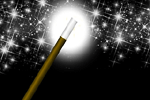
-
A duck for a dog
If you got your own place on the Internet, helping your visitors find what they are looking for is a great way to engage them and keep them staying a bit longer. A custom site search can achieve just …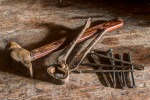
-
"Might as well have the best"
Aiming for better images? Think better lenses! This is your most important piece of gear, so you better get it sorted out. — Need some advice?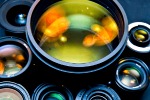
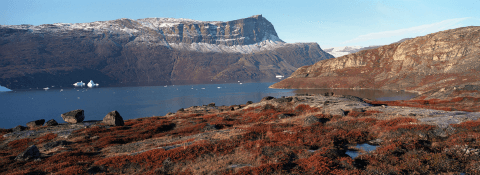
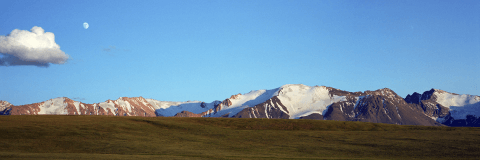
 Become a patron for
Become a patron for